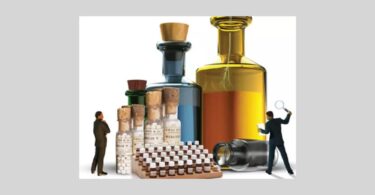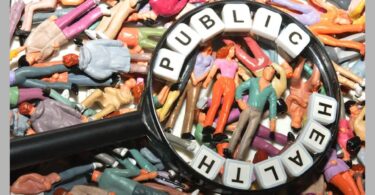There exists a lot of controversy and confusion about the homeopathic art of prescribing. According to Hahnemann, the decisive factor in selecting apotency and deciding on repetition or dosage of a prescription, should be found in the susceptibility of the patient. Yet, most diverse approaches to homeopathic prescribing are known, and as there are many practitioners, there are many different forms in which homeopathic remedies are prescribed.
This paper seeks to shed some light onto the posology and dosology of homeopathic remedies. The information constituting this article is taken solely from the 6th edition of the Organon [1], in order to provide an insight into exactly how Hahnemann wanted his fellow homeopaths to proceed with the administration of a remedy.
It has to be clarified at this stage that, in a homeopathic context, prescribing incorporates different aspects essential for the treatment of patients. The potency, the dose and the frequency of administration are all decisive factors influencing a patient’s recovery from illness.
“Homeopathy [hence] avoids even minimal weakening, and as possible, all creation of pain… therefore only uses for its cure such medicine whose ability to dynamically modify and alter the state of being is known…the same is given only in simple and subtle doses – so small that… no weakening or pain is caused, just enough to relieve of the natural disease…”. (Organon, p.17)
DOSOLOGY: This, which Hahnemann already mentions in the Introduction to the Organon, he very clearly stresses again in Aphorism 238, where he ascertains that if a remedy has been appropriately selected, it is the single, smallest dose of it that can prevent repeated disease onset and may bring on, by itself, the restoration of health. In Aphorism 272 he stresses that a single globule placed dry on the tongue constitutes one of the smallest doses to be used to treat the moderate, only recently arisen state of illness. He describes that by this small dose, only a few nerves are touched by the medication.
He continues that if such a globule is triturated, mixed with milk sugar, is then diluted in water and vigorously succussed prior to administration, a yet more potent remedy is created, of which even the tiniest amount of a dose suffices to touch many nerves.
Hahnemann places emphasizes that in no case is it necessary or acceptable, to give more than just one single remedy at a time. He stresses that, “ it is not correct, to attempt to impact with plentiful, what can be achieved using only a single” (Aph.273).
In Aphorism 247 he explains that it may be necessary to administer even the best selected remedy in multiple and different forms before the vital force is able to eradicate the disorder. Therefore, where the single of one globule does not suffice to bring about cure and a repetition of the well chosen homeopathic prescription becomes necessary, he insists that a remedy must undergo a “new dynamisation” that he terms the “plus methodology”. This mode of administration is a progressive, minute alteration of the selected homeopathic remedy. He first mentions this approach in Aphorism 247 and gives details of the modification process in Aphorism 248. This new dynamisation (Aph.248) is an even gentler approach to prescribing that, because of its progressive nature, makes each administration more potent in its curative strength. The administration of a such plussed remedy, needs to be continued until the state of illness of the patient is generally improved, or only weak symptoms, now caused by the homeopathic remedy-illness, appear ( Aph. 280). The vital force, now free of the natural disease will take only a short time to be relieved of the symptoms of the remedy-illness and the patient can be considered as restored to health (Aph.281)
Yet, Hahnemann cautions that even using the plus method, a remedy, an aggravation of symptoms may occur. In such a case, the quantity, that is the dose in which this remedy is administered, requires to be reduced, and the repetition of administrations needs to be lessened in frequency or may even need to be abstained from for some time. He refers to this again in Aphorism 282.
The homeopathic dosis, according to Hahnemann, only needs to be high enough to induce a healing reaction, while at the same time it needs to be sufficiently minute to assure the gentlest, but most rapid recuperation. (Aph.278). He stresses in Aphorism 279, that the dosage of a remedy, can never be made too small to not still be stronger that the natural disease.
POSOLOGY: When it comes to posology, that is, the selection of the appropriate dosis of potency in which to administer the appropriate remedy to the patient, Hahnemann indicates in Aphorism 246 that a homeopathic remedy should be “carefully selected, highly potentized, diluted in water and be given in the smallest possible dose”. He teaches, that only experimentation, careful observation of the sensitivity of the patient, and experience can determine the potency of the prescription for each individual case (Aph.278).
Hahnemann further points out in Aphorism 246 that the potency of a repetition dose must differ from that of prior administration and to a subsequent one, in order to avoid any adverse reaction. Such an aggravation may occur, if a dosis is repeatedly administered without modification. This progressive alteration in potency is needed, such that the diseased vital force can be altered as such, that it, without much trouble, is brought to recovery (Aph. 269).
The plus method Hahnemann describes in aphorism 248. He explains that 1 globule of the homeopathic remedy needs to be dissolved in a solution of 8 tablespoons of water that contains 10 to 15% of alcohol. The mixture that is created as such must then, prior to each administration, be vigorously shaken 8 to 12 times. All the subsequent administrations therefore, following this progressive dynamisation, are of a minutely altered potency. Such a constantly modified prescription can be repeatedly given to a patient without fearing the occurrence of adverse reactions (Aph.269). It is only if the symptoms of the patient change that a new, now better suited remedy needs to be selected. This then may in the same way be successively modified prior to administration, until its need, in turn, is exhausted or the patient’s health is restored.
REPETITION: Hahnemann starts by pointing out that as long as improvement of a patient’s state continues, all repetition of any homeopathic prescription is prohibited (Aph.246). He describes that in such a state, the homeopathic remedy continues to perform its healing action, and is proceeding towards cure. In Aphorism 238 Hahnemann reminds us that in most cases a single dose will not suffice, but mentions in Aphorism 246 that particularly in acute illness, a single dose of an appropriately selected remedy may lead to total recuperation. He also stresses that there are exceptions and circumstance under which a repetition is indicated in order to promote faster recovery. This is particularly the case in chronic illness (Aph.246).
Hahnemann states that such exceptions and the indicated repetition must be led by experience, and that the appropriately selected remedy must be modified by the plus metodology (Aph.248). Such a remedy may then be given repeatedly, “ daily, if necessary for months ”. He specifies that such a progressively altered prescription may be administered to the patient presenting a chronic state, daily or every second day, while in acute cases, such altered doses may be administered as frequently as “ every 6,4,3, 2 hours, or even more often ”. Unmodified remedy repetition he stresses, “ generally creates a tragedy ” (Aph.276).
A principal exception to the above described posology and dosology in homeopathic treatment, and a completely different mode of prescribing is required in the case of the principle miasms. Hahnemann stresses that these require doses of ever higher and higher potentisation, that may be administered daily or even several times a day (Aph.282).
Hahnemann teaches in Aphorism 273 that it is not only the best selected remedy that treats the case, but that it is also its appropriate dosage, or rather the minuteness of it. He emphasizes in Aphorism 277, that “ this minutest dosage of a best potentised homeopathic medicine, has greatest healing potential, that is almost magical, the more homeopathically it is selected ”. Vice versa, a remedy that is homeopathically best selected, must have greatest healing potential, the smaller its dosage is reduced in minuteness for gentle healing.
It becomes evident from the above that homeopathic prescribing incorporates three elemental aspects to be considered in the treatment of patients. The practitioner needs to match the potency, the dosis and the repetition of his prescription to the sensitivity of the vital force of the patient. If this is done appropriately the patient’s recovery from illness is the definitive achievement.
Reference:
[1] Hahnemann, S. (1974). Organon der Heilkunst (2.Auflage) 6B Heidelberg:Karl F. Haug Verlag.





Thanks you for bringing this much misunderstood topic to our attention which it’s importance deserves.
I should however, for the sake of accuracy, point out your mistake in assuming “posology” relates to potency, and “dosology” (which is not an English word) to dose.
Posology, from the Greek “poso” (how much) refers to dose – though it is used in discussion generally of dose and potency. “Dosology” were it to be used properly according to its Greek origin (“dosy” = to give) would perhaps be used in reference to the art of dispensing.
I make it a practice to try and examine the etymology of every word, and, as much as possible, to define each term before using it.
Hahnemann’s thoughts on posology are evolutionary. We SHOULD read, Chronic disease pages 125-136 and 155-159, 5th aph 246-247 and 275-287 and related aph in 6th organon TOGETHER only, this topic “The Hahnemannian Art of Prescribing” is well understood with logic behind it. Knowing the logic behind potency, dose, repetition are very important but fixing the posology for a given homeo case is still more important. Just TWO quotes from Hahnemann to invoke interest in this-
“We must be guided as well by the nature of the different MEDICINES, as also by the corporeal CONSTITUTION of the patient and the magnitude of the DISEASE” (Org V §246)
Note: Hahnemann gave many deciding factors of each of these three guiding considerations. for example Hahnemann gave following deciding factors for the CONSTITUTION of the patient
“Nevertheless the incredible variety among PATIENTS as to their SENSITIVITY, their AGE, their spiritual (mental and emotional) and bodily development, their VITAL POWERr and especially AS TO the NATURE OF their DISEASES, necessitates a great variety in their treatment, and also in the administration to them of the doses of medicines. (CD-pg 155)
Please explore the rest…